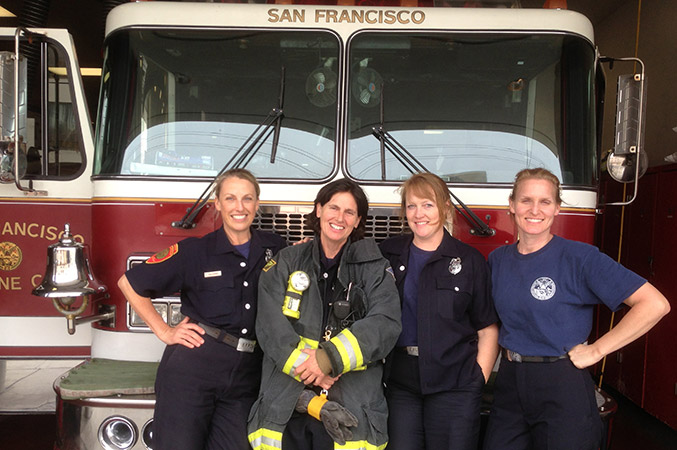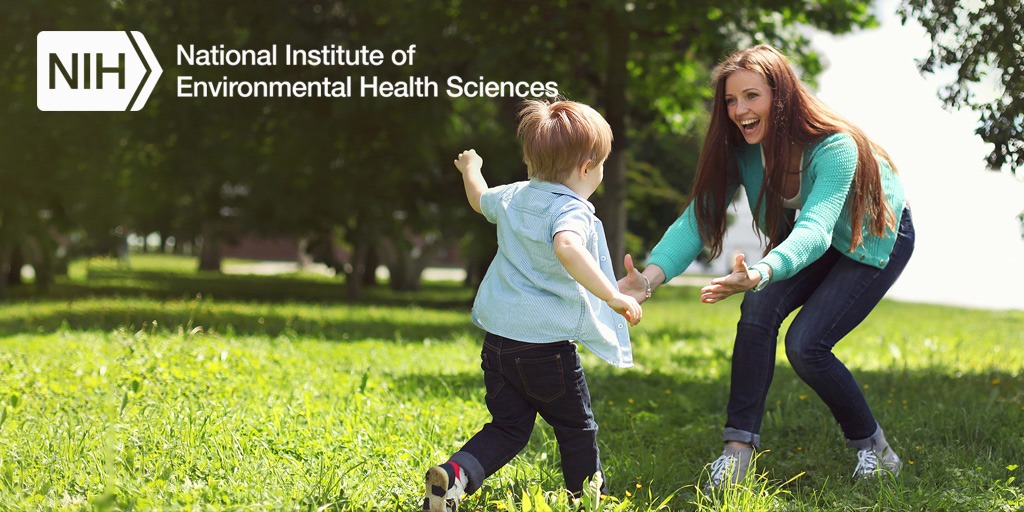Women Firefighters Help Improve Community-Based Participatory Research
The Partners of the Women Worker Biomonitoring Collaborative (WWBC), a community-based participatory research (CBPR) collaborative, was started in 2012 to characterize environmental chemical exposures among women workers, particularly firefighters. The group recently analyzed the factors that made their partnership successful and summarized their analysis in an August 2023 paper. The paper also provides lessons for enhancing the effectiveness of CBPR on translating research into policy change to improve the health of community members.
The WWBC was initially formed by women firefighters in San Francisco in response to concerns about high numbers of breast cancer diagnoses among female colleagues. Much of the collaborative’s work has therefore influenced policies and practices that aim to reduce exposures to environmental chemicals relevant to breast cancer risk. The WWBC later expanded to include health care and office workers.
“The WWBC is the first effort to characterize women workers’ exposures to environmental chemicals linked to mammary tumors and breast cancer in toxicological and human health studies,” stated Rachel Morello-Frosch, Ph.D., MPH, professor at the University of California, Berkeley and principal investigator with the WWBC. “The impact this collaborative’s work has had on informing strategies to reduce chemical exposures, particularly among firefighters, is truly outstanding.”
Research results gathered through biomonitoring, or analysis of biological specimens collected from study participants, have been used to support policy change to reduce firefighters’ exposure to hazardous substances. Examples of policy change supported by WWBC’s work include requiring firefighting vehicles to have decontamination kits, enacting a law that provides paid leave for work-related breast cancer, restricting PFAS-containing firefighting foams in California, and banning some per- and polyfluoroalkyl substances globally, through the United Nations’ Stockholm Convention on Persistent Organic Pollutants.
The work has also supported changes in firefighters’ practices, including encouraging the use of breathing apparatuses that filter air after a fire has been extinguished, removing and decontaminating gear after returning to the station, and showering shortly after exposure to firefighting materials.
Factors That Contributed to Success
The researchers determined that several key factors enabled the WWBC to have a broad-reaching impact. The collaborative includes a community-academic partnership typical for CBPR projects: women firefighters in the San Francisco Fire Department and researchers at the University of California, Berkeley and Silent Spring Institute. The collaborative’s inclusion of labor unions and environmental advocacy organizations sets it apart and adds diversity of thought.
The firefighters who began the study initially engaged with the Breast Cancer Prevention Partners, an advocacy group that promotes restricting exposures to toxic chemicals, and Commonweal Biomonitoring Resource Center, an advocacy group that promotes producing scientific evidence of chemical exposures through biomonitoring. These partners introduced the firefighters to the academic researchers.
This collaborative supported mutually beneficial goals that led to a set of policies, novel research approaches, and greater attention to female firefighters’ health. The partners’ varying fields provided an opportunity for the WWBC’s work to support policy change at the local, state, national, and international level.
“Partnering with the advocacy groups was a critical step in advancing the firefighters’ efforts to examine and understand their exposures,” reflected Jennifer Liss Ohayon, Ph.D., a research scientist at the Silent Spring Institute. “They were also central in many of the successful efforts to translate research results into policy, which led to changes that will reduce women firefighters’ toxic exposures.”
Firefighter participants in the WWBC. (Photo courtesy of Rachel Morello-Frosch)
Another strength of the WWBC was its early focus on implementing strategies to prevent adverse health outcomes. For example, researchers knew from previous studies that firefighters were exposed to elevated levels of certain toxic chemicals. Therefore, even before biomonitoring analyses were finished, WWBC partners developed a training program, “Extinguishing Breast Cancer in the Fire Service,” that promoted practices to reduce harmful exposures. By showing that the firefighters’ health, not just the research results, was a priority, the researchers say they gained the firefighters’ trust.
Clear communication was also key to the WWBC’s success. Researchers prioritized explaining scientific concepts in plain language and ensuring that study goals were realistic and understood by all partners. For example, while firefighters hoped to learn whether certain exposures were causing breast cancer, researchers clarified that the research could not show causation but could help participants get a better understanding of which chemical exposures may be relevant to breast cancer risk. Partners in the WWBC also created a digital report-back tool that explained individual biomonitoring results to each study participant ethically and effectively.

Firefighter participants in the WWBC. (Photo courtesy of Rachel Morello-Frosch)
An emphasis on collaborative partnerships and co-learning further enabled the WWBC’s success. Firefighters provided important insights into their profession for developing study design protocols, contributing to peer-reviewed articles, recruiting study participants, presenting at conferences, and developing an exposure assessment survey, among other activities.
Lessons Learned and Next Steps
Other CBPR researchers can apply facets of the WWBC’s work to their studies. A critical factor in the WWBC’S success was creating a collaborative and diverse partnership that could reach various levels of policymaking, from local to international. Other researchers could consider engaging with relevant advocacy groups, and if the study involves workers, engaging with workers’ unions or advocacy organizations.
Moving forward, the WWBC’s goal is to further expand. They want to create a women workers’ biospecimen bank that includes a broader array of health care workers, such as patient care aides and environmental service workers, and domestic workers, such as house cleaners and home health care aides. The data, including the biospecimens, will be available for researchers who seek to better understand how occupational exposures affect breast cancer and other health outcomes.
Source link
www.niehs.nih.gov


